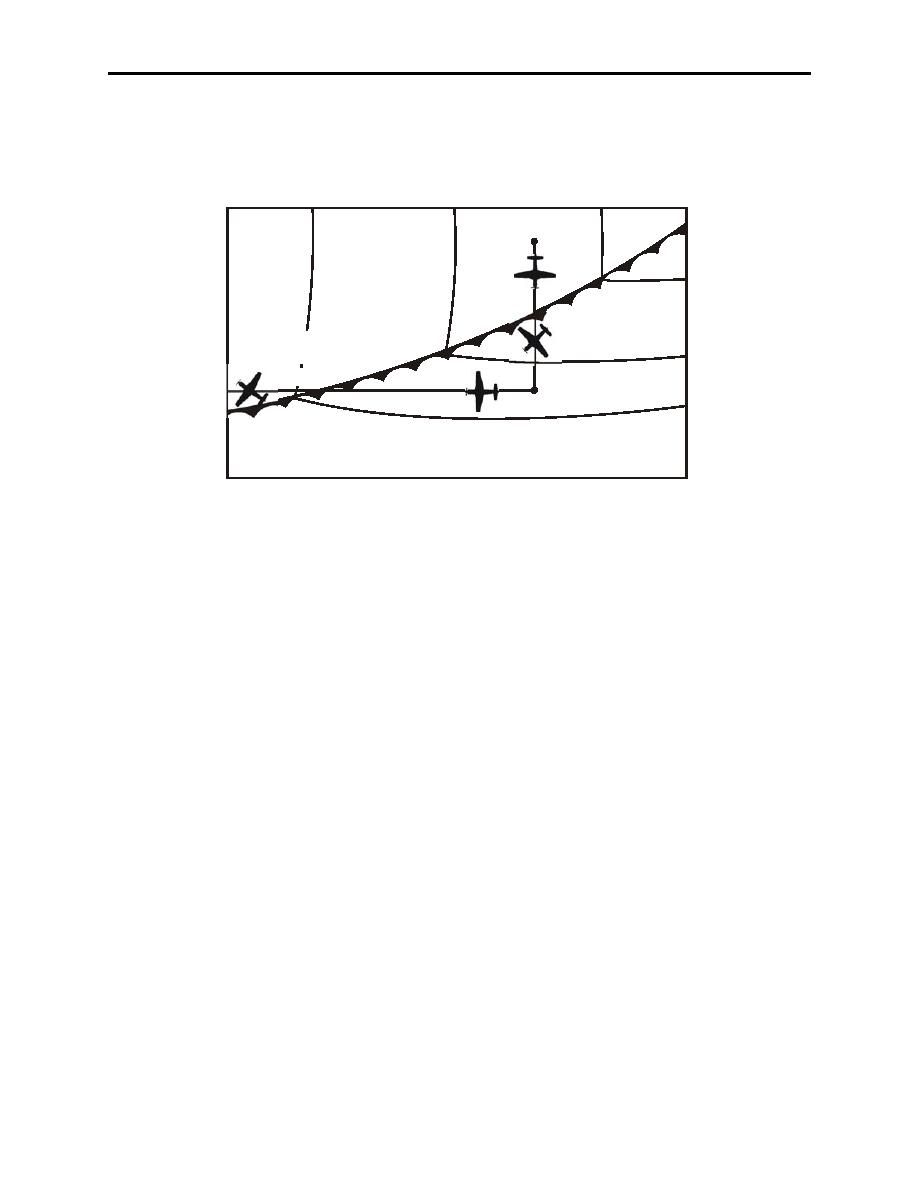 |
|||
|
|
|||
|
Page Title:
Figure 3-9. Wind Shift Across a Cold Front |
|
||
| ||||||||||
|
|  CHAPTER THREE
AVIATION WEATHER
maintain your original ground track (Figure 3-9). This wind shift often creates a hazardous wind
shear when departing or approaching an airfield. For example, winds at 220 at 10 knots ahead
of the front can rapidly change to 330 at 20 knots gusting to 30 knots immediately after the
front.
L
A
WINDSHIFT X
WINDSHIFT REQUIRES
ALTERATION TO
WINDSHIFT REQUIRES
THE RIGHT
ALTERATION TO THE RIGHT
WINDSHIFT
B
Figure 3-9 Wind Shift Across a Cold Front
307.
FACTORS INFLUENCING FRONTAL WEATHER
The weather along fronts is not always severe. Flying conditions can vary from insignificant
weather to extremely hazardous situations. The hazardous situations can include thunderstorms,
turbulence, icing, low ceilings, and poor visibility. The severity of the clouds and precipitation
occurring along a front are dependent on the following factors:
1.
The amount of moisture available (shown by the dew point),
2.
The degree of stability of the lifted air,
3.
The slope of the front,
4.
The speed of the frontal movement, and
5.
The contrast in the amounts of temperature and moisture between the two air masses.
The amount of moisture available, as indicated by the dew point, greatly determines the amount
of weather associated with a front. Often little or no significant weather is associated with a
front or a portion of a front because of a lack of moisture, despite the presence of all other
factors.
The degree of stability of the air lifted determines whether cloudiness will be predominantly
stratiform or cumuliform. With stratiform clouds, there is usually steady precipitation and little
3-10 Mechanics of Frontal Systems
|
|
Privacy Statement - Press Release - Copyright Information. - Contact Us |